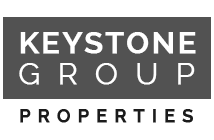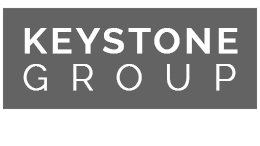For information about luxury real estate in Southern California, call Bob Cumming of Keystone Group Properties at 310-496-8122. Keystone Group Properties services buyers and sellers of distinctive Southern California homes along the West Coast and Beverly Hills.
The New New-Home Market
The bad news for buyers: The new market environment means less discounting, fewer incentives and, in some cases, longer waits for homes. But there are several steps you can take to be a better shopper—from choosing amenities judiciously to waiting until a home is partially built before pulling the trigger on a deal.
Low interest rates and improving economic conditions are persuading people like Jerold Hawkins to take the plunge. Mr. Hawkins, a software developer for the auto industry, and his wife, Katherine, a nurse, recently agreed to buy a new five-bedroom home in Rochester Hills, Mich., for $289,900. “I now have a really good job and so does my wife,” Mr. Hawkins says.
PulteGroup
A Pulte Homes “Ellsworth” house in the Grand Vista Estates development in Northville, Mich.
The auto industry’s recovery has spurred demand for new homes in the $180,000 to $500,000 price range in the Detroit area, says Dan Elsea, president of brokerage Real Estate One in Detroit. In the choicest neighborhoods, even homes built without a ready buyer often sell long before completion and with multiple offers, he says.
After the new-home market’s dismal performance of the past few years, any improvement is welcome. The median price plunged 22% from its peak of $262,600 in March 2007 to a low of $204,200 in October 2010, with some markets tumbling 50% or more. Just 306,000 new homes were sold last year, according to the U.S. Commerce Department, the lowest on record.
But the tide seems to be turning. New-home sales rose in July for the third time in four months. And with inventories at record lows, builders are trimming incentives and raising prices in markets such as Detroit, Houston, New York and Phoenix.
Overall, sales of new homes surged 22% from September through July, according to the National Association of Home Builders. The median price of new homes sold in July stood at $224,200, up 9.8% from their 2010 lows.
Workers in July frame the first home in a new community in Gilbert, Ariz. Prices and waiting times for new homes in the Phoenix area are starting to rise.
“We’re clearly in recovery,” says Douglas Yearley Jr., chief executive of luxury builder Toll Brothers TOL -1.60%in Horsham, Pa., which builds in 20 states nationwide. In August, Toll reported the most sustained demand in more than five years. Stronger markets include Connecticut, Massachusetts and New York, while Illinois and Las Vegas are softer, the company says.
Billie Armenta, a government employee, says she is surprised the $294,900 base price of her new home in Phoenix has risen by more than $33,000 since she and her husband, Ruben, a retiree, signed their contract in January. The couple had to wait six weeks for an appointment at the design center and nearly eight months for construction to be completed.
The much larger market for existing homes is perking up as well. Prices in June posted their first year-over-year increase in nearly two years, according to the S&P/Case-Shiller index of 20 major metropolitan areas. From September 2011 through July 2012, sales jumped 5%, according to the NAHB.
To be sure, the housing recovery is still in its infancy, with credit tight and sales and prices well below historical levels. Rising interest rates, an uptick in the supply of foreclosed homes or a weakening economy all could crimp sales.
More Weekend Investor
But after years of retrenching, builders have whittled down their stockpiles greatly, and are being cautious about bringing new homes to market. The inventory of unsold new homes now stands at 144,000, down from a peak of 575,000 in July 2006, the Commerce Department reports.
At the current sales pace, that’s a 4.9 month supply of new homes; six months is considered a balanced market, says NAHB chief economist David Crowe.
Big Changes
One of the biggest changes since the downturn is where new homes are being built. The new homes are located much more closely to job centers than they were five years ago, says John Burns of John Burns Real Estate Consulting in Irvine, Calif.
Some builders are rolling out features not likely to be found in the resale market. KB Home, KBH -5.49%which is based in Los Angeles and builds in 10 states and Washington, D.C., lets buyers choose whether the master bedroom is on the first or second floor. In Southern California, it has consulted with feng shui masters on home design.
PulteGroup, PHM -2.36%which is based in Bloomfield Hills, Mich., and builds in 29 states, offers the “Pulte Planning Center,” a secondary office space off the main living room that helps homeowners stay organized and monitor their children’s homework.
The New Home Co. in Aliso Viejo, Calif., offers a multigenerational home with a private living space for an older parent or child returning home after college. “We can take any walk-in pantry we have and turn it into a separate cooking facility,” says New Home Chief Executive H. Lawrence Webb. Lennar, LEN -1.45%meanwhile, offers a “Next Gen” home aimed at baby boomers with aging parents or boomerang kids.
Builders also are touting energy efficiency. Meritage Homes, MTH -3.67%which is based in Scottsdale, Ariz., and builds in seven states, lets buyers spend the credits they can apply to upgrades or financing on solar panels; in some model homes, an entire room is deconstructed to highlight energy-efficient features.
Another change: Homes are starting to get larger again, after falling during the housing downturn. Among new homes sold in the first half of 2012, the median square footage was 2,013, up from a recent low of 1,945 in 2009, according to Hanley Wood Market Intelligence.
Experts say larger homes are more attractive to the trade-up buyers who now dominate the new-home market. Steve Ruffner, president of KB Home, Southern California, says buyers can afford bigger homes because prices and interest rates have fallen.
Of course, what you will get for your money depends on local conditions. If you are thinking about a new home, here are some points to consider.
Don’t be fooled by the sticker price. “The base price always looks incredibly good,” says Lloyd Fox, a real-estate broker at Long Realty in Scottsdale, but upgrades typically add 10% to 15%, sometimes more.
Billie Armenta, the Phoenix home buyer, says the purchase price for her home rose by more than $55,000 to $350,000 once the fee for a choice lot, carpeting, higher-quality cabinets and other upgrades were figured in.
Expect to pay a premium. The median new home sold for 36% more than the median existing home last year, excluding distressed properties that were foreclosed on, according to Hanley Wood.
That spread is wider than in the recent past. The gap had narrowed to just 28% in 2009, when builders were scrambling to unload the last of the inventory built during the housing boom. Since 2005 the gap has averaged 34%.
Remember that location matters. Your ability to negotiate a good deal can vary even within the same locale. “We have some markets where we’re raising prices on every plan pretty significantly,” Standard Pacific chief financial officer Jeff McCall told investors in July. “And then 10 miles down the road we have stagnant pricing.”
Closer-in developments generally command a premium versus homes in outlying areas.
In Tucson, builders are offering discounts from the list price on homes built without a ready buyer in the Dove Mountain area, which was hard hit by the housing bust, says Laura Sayers, a vice president at Long Realty. Less than 10 miles away, in Oro Valley, demand for new homes is so strong there is a waiting list for new lots, she says.
Negotiate aggressively. Incentives are getting smaller, on average, but buyers in some markets still have a fair amount of bargaining power.
In the Tampa Bay, Fla., area, builders are buying down interest rates, paying closing costs and tossing in appliances, says Jaci Stone, an agent at Century 21 Beggins Realty, who had one builder kick in two months’ rent so a client could break a lease.
Hayley and Tyler Sutterby nabbed $20,000 in upgrades instead of the standard $8,000 package when they recently bought a four-bedroom home under construction in Lithia, Fla. The couple is spending the credits on higher quality cabinets and flooring, a tankless water heater and other energy-saving features, says Ms. Sutterby, who works in marketing for a cable company.
Be tactical. The closer a home is to completion, the fewer choices you get to make, but the more likely the builder is to make a deal. That’s because builders don’t want to end up saddled with finished homes.
So keep an eye out for homes that are near completion or are in inventory, says Ms. Stone, the Tampa agent, who adds that publicly traded builders are often more willing to make a deal at the end of the quarter or fiscal year.
Prepare to wait. When home prices were tumbling, buyers were regularly advised to sell their current homes before buying new ones—or risk being stuck with two mortgages. But with inventories at record lows, buyers might have to wait three to six months for their new home to be completed.
That can make timing tricky for move-up buyers. Martin Mitchell, vice chief executive of Mitchell & Best Homebuilders in Rockville, Md., suggests that buyers in stronger markets prepare their home for sale, but wait until construction is under way before bringing it to market. Another option: sell your home and rent it back for a few months.
Understand your financing options. Builders often will pay closing costs or provide other incentives if you get your mortgage from them. But the deals offered by builders aren’t always better than what you might get from another lender, says Greg McBride, a senior financial analyst at Bankrate.com.
Because their credit lines are limited, more builders are asking buyers to take out construction loans that roll into a standard mortgage once the home is completed instead of having the builder finance the construction from its own credit line, with the borrower taking out a mortgage when the sale closes. The bank makes payments to the builder, typically as construction goals are met, with the buyer generally paying interest only on the funds used.
Anyone considering this option, “should at least have some sense of what the permanent financing costs will be,” even if you can’t lock in a mortgage rate, to make sure payments are affordable, advises Keith Gumbinger, a vice president at mortgage-data provider HSH.com.
To reduce fees, arrange to close on both loans at the same time instead of closing first on the construction loan and then later on the mortgage





